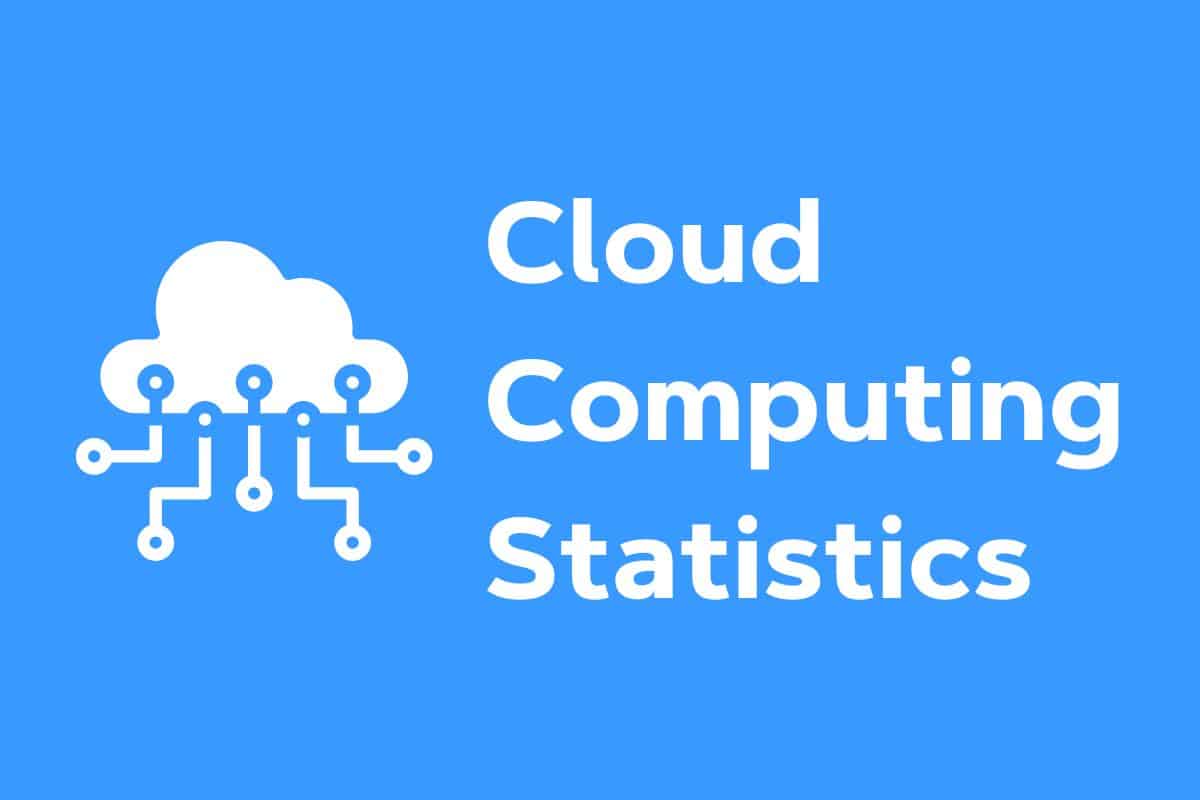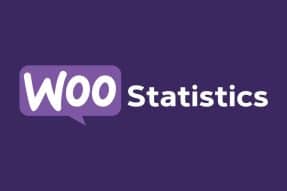Cloud Computing Statistics (How Many Companies Use Cloud Computing?)
Are you interested in knowing some of the most interesting cloud computing statistics?
Do you want to know how many companies are using cloud computing? Or maybe what’s the largest data center? But I am sure you’re interested in discovering the most preferred cloud computing provider. Also, do individuals prefer paid or free plans?
You will find all this and more in 31 stats and trends below.
Cloud computing is continuously rising, expected to hit approximately $600 billion in 2023.
It’s a cost-effective solution that helps companies worldwide store, automate, manage and monitor files, data and entire applications through quick and easy access.
If you aren’t using a cloud yet, you might consider it by the end of this article.
This post covers:
- General Cloud Computing Statistics
- Cloud Computing Market Statistics
- Cloud Computing Security Statistics
- Cloud Computing Usage Statistics
- Cloud Computing Infrastructure Statistics
Cloud Computing Statistics (Our Top Picks)
- 94% of all companies worldwide use cloud computing
- Citadel has 7.2+ million square feet of data center space
- Cloud computing is on the rise, expected to hit $590+ billion in 2023
- Amazon S3 owns 44%+ of the enterprise cloud storage market
- 48% of cloud-stored data is sensitive (vulnerability!)
- 52% of businesses prefer cloud computing with native security tools
- 89% of users use mobile apps to access cloud storage
- 30% avoid the public cloud due to expensive performance requirements
General Cloud Computing Statistics
1. How many companies use cloud computing?
94% of all companies worldwide use some kind of cloud computing service in 2023 that help them run their operations. That’s a 14% jump from 2020.
Different organizations use cloud computing for different reasons, but the following two are the main reasons why switching to the cloud.
Source: Colorlib
2. 40%+ of organizations use cloud automation to optimize costs and time
In the course of ten years, more companies transformed from manual operations to automated ones to save time and reduce unnecessary spending. Going with automation allows professionals more consistent environment monitoring, which helps reduce/eliminate waste.
Source: Flexera
3. 61%+ of users pick free storage plans for personal usage
The most popular pricing plan for cloud storage for personal use is the “free limited” plan at 61.57%. However, 54% of the free plan users still purchase additional space when they hit the limit, which is usually anywhere from 2 to 17GB.
The second most preferred is the “paid limited” plan (55.56%) and the third is “provided by an organization” (37.04%).
Source: GoodFirms
4. 1 new cloud server for every 600 smartphones or 120 tablets
A new cloud server is added every time 600 smartphones or 120 tablets are in use.
One research found that there are approx. 6.8 billion smartphones in the world. If we do the quick math, this means there are around 11.3 million servers just for smartphones.
5. Cloud computing can be up to 40x more cost-effective than an in-house IT system
It’s no wonder why more and more companies and organizations globally are switching to cloud computing. If it means being forty times more cost-efficient, why wait, right?
Still, there are multiple reasons why some applications don’t opt for a public cloud (see below).
Source: Multisoft Virtual Academy
6. Citadel has 7.2+ million square feet of data center space
If you’ve ever wondered how large data centers are, it’s best to know the largest one. The Citadel Campus in Tahoe Reno, Nevada, has a whopping 7.2 million or 670,000m2 of data center space (upon completion).
In 2017 the first data center was opened with 1.3+ million square feet, having 130 MVA power capacity and 83K+ tons of cooling capability.
Source: Wikipedia
7. 94% of people use cloud storage for public file sharing
Public file sharing is the biggest reason (94.91%) users choose personal cloud storage. The other three main motives for cloud use are the storage of personal data, storage of office data and private file sharing.
Source: GoodFirms
8. Enterprises average 360+ SaaS apps in the cloud
Research of over 30K applications found that an average company uses 254 SaaS apps and enterprises 364, which both are whopping numbers.
What’s interesting is that the apps only have a 45% engagement rate over a period of sixty days, so less than half the employees use them often.
Source: Productiv
9. EU uses cloud storage primarily for email and files
European enterprises use cloud services mostly for email (79%) and file storage (66%). Other popular uses are office software (61%), financial/accounting software (47%) and hosting enterprise databases (46%).
Source: Eurostat
Cloud Computing Market Statistics
10. Cloud computing is on the rise, hitting $590+ billion in 2023
Year in and year out, cloud computing marketing is continuously growing. The worldwide end-user spending was estimated at $591.79 billion for 2023 and is expected to get even bigger in the coming years.
More and more businesses are adopting cloud computing, especially public cloud services because they are cost-effective. There’s no upfront payment, which, on the contrary, is necessary to get a private cloud.
What’s more, public cloud computing grows with you, so you “pay as you go.”
Cloud computing market growth over the years
| Year | Growth in billions of $ |
| 2023 | 591.79 |
| 2022 | 490.33 |
| 2021 | 412.63 |
| 2020 | 314 |
| 2019 | 243 |
| 2018 | 197 |
| 2017 | 145 |
Source: Statista
11. Cloud app market share is expected to reach $168.6 billion by 2025
With an annual growth rate of 4.8%, the cloud application market share is expected to reach $168.6 billion by 2025. For your information, it reached $133.6 billion in 2020.
The top ten cloud software vendors are Microsoft (19.5% growth), Salesforce (15.0% growth), Oracle (32.5% growth), SAP (14.7% growth), Adobe (27.5% growth), ServiceNow (31.7% growth), Workday (22.7% growth), Intuit (18.5% growth), Zoom (306.7% growth) and UKG (21.3% growth).
Still, as we found from another resource (see below), Amazon S3 tends to be the largest.
Fun fact: Some of the largest companies using cloud software are Fujitsu, Ford Motor Company, Centrica, Heineken, Birkenstock, AstraZeneca, Tesco PLC and Telefonica, to name a few.
Additionally, the most popular cloud storage services are Google Drive (94%), Dropbox (66%) and OneDrive (39%).
Source: Apps Run The World
12. 36% of commercial real estate plans to invest in cloud computing and storage
After surveying 400 commercial real estate executives, Deloitte found that their biggest investment in technology will be cloud computing. Second is blockchain, third is robotic process automation and fourth is artificial intelligence.
Source: Deloitte
13. 44%+ of the enterprise cloud storage market owns Amazon S3
Amazon S3 (Amazon Web Services) leads the global enterprise data storage software industry. Its total market share is 44.66%, with Pure (11%+) and NetApp (3.5%+) in second and third. MASSIVE!
Source: Statista
14. Cloud data centers’ global energy consumption is on the rise (3%)
Even though all the data is stored in the cloud, these “clouds” still need a physical location. Cloud data centers are built of millions of servers around the globe that account for a whopping 3% of total global energy consumption. What’s more, it’s expected to hit 8% soon.
Thus, more and more data centers rely on green energy, like solar and wind.
Source: BMC
Cloud Computing Security Statistics
15. 48% of cloud-stored data is sensitive
More and more companies (and individuals) store their data in the cloud, of which 48% accounts for sensitive data. Unfortunately, encryption on sensitive data is low, which means a considerable risk of possibly losing it (due to cyberattacks).
Luckily, the security and encryption of sensitive data are improving yearly.
16. Malware leads in sources of security attacks
A survey found that 56% of respondents said the malware is the leading cause of security attacks. In second place is ransomware (53%) and in third is phishing/whaling (40%). But many (29%) said “human error” was the top threat cause.
| Percentage of sensitive data | How much of it is encrypted |
| None | 1% |
| 0-20 | 9% |
| 21-40 | 39% |
| 41-60% | 27% |
| 61-80% | 12% |
| 81-100% | 11% |
| Don’t know | 1% |
As you see from the table above, there’s still a small percentage of those who have at least 81% of their sensitive data encrypted.
Source: Thales
17. 81% of users say that security is a challenge
Even though the technology is improving daily, 81% still say that security in cloud computing is a challenge. (Top enterprises also find it hard to manage cloud spend and lack resources and expertise.)
Source: Flexera
18. Data loss is the biggest concern for 64%
One of the biggest concerns regarding cloud computing security is data loss and second data privacy.
Another study found that the cloud infrastructure itself (68%), unauthorized access (58%) and insurance API (52%) are some other cloud security concerns among users.
Source: Statista
19. 52% of businesses prefer cloud computing with native security tools
More than half of companies surveyed said that they want a cloud service that is safe and sound out of the box. (This also allows those with less experience to store and share data more efficiently without running 3rd-party security software.)
Source: Checkpoint
20. The most targeted industries are business/professional and financial
The top five sectors targeted by “enemies” are:
- Business and professional services (14%)
- Financial (14%)
- Healthcare (11%)
- Retail and hospitality (10%)
- High technology (9%)
Source: M-Trends
21. Europe is becoming the most targeted region
Even though the United States is still the country most targeted by ransomware attacks, the “popularity” of attacks is decreasing. On the contrary, Europe is becoming increasingly bombarded, with endless new victims appearing countrywide.
Source: Mandiant
Cloud Computing Usage Statistics
22. 94%+ use Google Drive
The most popular cloud storage service (as we already learned briefly above) is Google Drive at 94.44%. Many reported that they prefer Google Drive over any other cloud service because of its simplicity and quickness.
The other two that are highly in use are Dropbox and OneDrive.
| Cloud storage service | Percentage of use |
| Google Drive | 94.4% |
| Dropbox | 66.2% |
| OneDrive | 39.3% |
| iCloud | 38.8% |
| Amazon Drive | 9.7% |
23. 89% of users use mobile apps to access cloud storage
While users prefer to open a mobile application (89.35%) to access their cloud storage the most, many also use a website’s interface (87.96%). Most use both. Desktop apps are the rarest tools to access cloud storage (only 10.65%).
24. 65% use the cloud as their primary data storage
Cloud storage is becoming increasingly popular for personal and professional use. 65.28% say they use it as their primate data storage for backups, viewing, quick access and easy-to-find stuff.
The convenience is obvious; you just drag and drop the files to share with another person or to store for your later easy access.
| Usage of cloud storage | Percentage of users |
| Office data | 92.6% |
| Personal data | 73.1% |
| File sharing | 72.7% |
| Medium for computing | 33.8% |
25. 54% of users use at least three different cloud services
Not only do most of the users say that cloud storage influences how they store and manage data (auto-syncing, default syncing, etc.), 54.62% say that they use at least three different services. That would mainly be Google Drive, Dropbox, iCloud and/or OneDrive.
Source: GoodFirms
26. There will be 200 zettabytes of data stored by 2025
Even though this is a prediction, it’s so very likely that people worldwide will store 200 zettabytes (ZB) of (private and public) data in the cloud by 2025. I’m not good with math, but that sounds like A LOT!
Source: Cybercrime Magazine
Cloud Computing Infrastructure Statistics
27. At least 3 departments in an organization decide on picking a cloud provider
While it is thought that the IT department decides on choosing the right and ideal cloud provider, that’s not the case. In fact, on average, 3.7 groups of an organization sit down to discuss which solution to go with.
The four most common are IT leadership (50%), information security (47%), IT infrastructure and management (47%) and non-IT executive management (44%).
28. 47% of organizations deploy new applications with a cloud-first policy
The most preferred method for deploying new applications is cloud-first (47%), followed by on-premises technology resources and public cloud services (27%) and on-premises first (26%).
Moreover, some of the driving factors of the cloud-first app deployment approach are the total cost of ownership, continuous integration/delivery, license flexibility and virtualization, to name a few.
29. 30% avoid the public cloud due to expensive performance requirements
There are many reasons why some applications don’t consider or aren’t suitable for public cloud deployment.
| Why do some apps not choose public cloud | In percentage |
| Costly performance requirements | 30% |
| Challenging implementation of security measures | 29% |
| Expensive and complex to migrate | 29% |
| Can’t meet with functionality/usability expectations | 27% |
| Can’t meet functionality/usability expectations | 25% |
Furthermore, more than 40% of on-premises applications are strong candidates to move and go with a public cloud service (expected to happen in the next five years).
Source: Enterprise Strategy Group
30. 69% say they trust cloud providers to build better tools for managing their clouds
Starting in the cloud from scratch could mean a massive investment, which not many businesses and organizations can afford. Thus, 69% of them trust that a cloud provider can build better tools they can use to manage their own clouds.
In addition to that, 55% say that it provides them more value to manage and monitor tools from a public cloud service than 3rd-party tools.
Source: IDC
31. More and more users are switching to hybrid clouds
In a report from 33,000+ professionals, DevOps gathered plenty of useful information, of which one says that 42.5% of users are using hybrid clouds, which is a nearly 20% increase in just one year.
A hybrid cloud is a mix of computing, storage and services scattered across different environments.
Source: DevOps
Conclusion
Cloud computing has many benefits; thus, many businesses and organizations are going cloud.
It allows companies to save money by reducing/eliminating the costs of on-site data centers and extra expenses due to purchasing hardware and software.
Using a cloud service is also much faster and way more effortless (you can automate many tasks).
It’s a growing industry with a lot of high-tech behind it, but there’s still a lot of room for improvement.
Do you use cloud computing? Do you trust it? If not, why haven’t you made the switch yet?
Let us know in the comments section below.








This Post Has 0 Comments